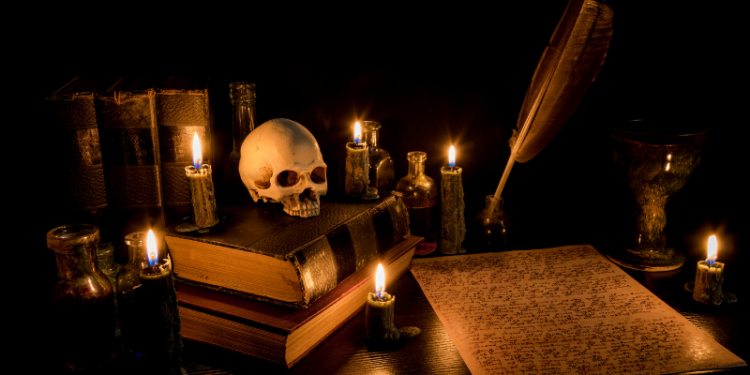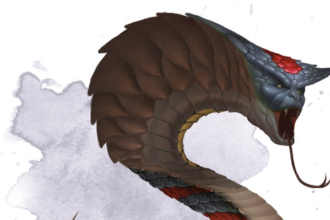How to Map Your Campaign Setting

The feeling I get when I look down on a map I’ve created for my next homebrew campaign is like nothing else. Suddenly, the world that existed only in my head is now expressed in a physical (or digital) form.
When creating your map you are not just creating a reference tool for your players, but a wellspring of inspiration for you as the Dungeon Master, and a guide for future adventure ideas.
Those unfilled areas could be teeming with hordes of goblins lead by a banished devil, or a hidden kingdom of elves or an underwater city of sahuagin bent on covering the world with the sea.
Start Small, Start Local
When beginning the map creation process, start small. Keep the scope of your design to a valley, or a large city, and the surrounding countryside, or a single island. You can always expand the map as the campaign progresses.
Even games that center around travel, like a pirate campaign, or a Spelljammer-style game, should start with a small map. This reduces the need for you to fill out an entire planet with interesting locations, dungeons, NPC’s, and monsters.
Starting with a small, local map will help you focus your design efforts, and give you a chance to do a deep dive into the major NPCs and monsters of the area.
An easy way to start building a map is to create a valley with the following features:
- A range of mountains
- A large, old-growth forest
- A river or other large body of water
- A medium-sized trade hub
- Three to five villages and hamlets
- Then sprinkle in ruins, abandoned villages, and a dungeon
There you have it! A basic map to start you off on a campaign.
Locations As Adventure Hooks
Creating locations is very similar to creating characters. You not only have to design a mechanically interesting and challenging dungeon but one that has links to the rest of the world, and a sense of history and verisimilitude to it.
So, think of your locations – both dungeons and not – as being adventure hooks in and of themselves. A tavern at a crossroads can be the great setting for an adventure just as much as the forgotten dungeon of a mad archwizard.
Locations can give you opportunities to reveal lore, backstory, and motivations around your central villain or conflict. How? Here are a few methods:
- Sprinkle lore giving tidbits around the location. These don’t necessarily have to be lore books or histories, but your descriptions of the area can reveal lore and history. Perhaps the town square has a statue dedicated to its founder or a local spirit.
- World-build local customs and culture to create an event that can create a compelling adventure.
- Changing seasons, and the cultural celebrations that mark seasons are a great way to anchor your game world in a familiar reality for your players.
- In the dungeons, ruins, and other adventure locations you can put details in your descriptions to give it a sense of history and use. Start with the original purpose the area was used for.
For example, the Tomb of Arzhak was first built as a temple and catacomb for the followers of a long-forgotten dwarvish deity before it was converted to serve as a home for a goblin tribe before they were finally conquered and enslaved by a white dragon who was killed by the last king and now has been raised by as a dracolich by a doomsday cult.
If this is the history, layer each of the aspects in as your players explore, using description and monster choice to show the history.
Perhaps the white stone of the original temple is now covered in goblin graffiti and tribal totems and guarded by mind-controlled goblins. Dragon claw marks and unnatural cold linger about the inner sanctum where cultists live and undead roam.
Working in Player Backstory
When you are designing your map, keep in mind locations from your player’s backstories. Have a paladin from an order worshiping Bahamut? Why not have a chapter located in town, or a fellow paladin or priest from the order show up with a quest?
Adding in player backstory locations can be a good way to build player investment. You can show how the player’s action affects the world by having these locations change as the campaign progresses.
Next week we’ll take a look at how to create a realistic map!



